Back a while ago, someone asked what all the hubbub was about ‘qualifying’ for various big events within the Triathlon or Running world. So here’s the quick rundown of how it all works for the top events in each sport. Let’s start with the easiest and most clear one first…
Aside from the Olympics and Olympic qualifying events, this is about as high as you get in the running totem pole world. The good news is that unlike tri’s where your qualifying status is based against your competitors on any given day – Boston qualification is simply a race against yourself. You hit the time, you’re in. Done deal!
In the case of Boston, you need a certain qualifying time to be accepted. Once you achieve that qualifying time you can run Boston* assuming it hasn’t filled up yet that year. There are an assortment of age groups, and each one has different minimum times. So, for a Male 18-35, the minimum time is 3:10:59. If you get 3:11:00 – sorry, try again next year. 🙁
Here’s the table for Boston. There are different age group standards for both male and female. Update: Note, these have since changed since publishing 3+ years ago, see new times on BAA’s website.
In a similar vain – there’s also something similar for another popular race – the New York Marathon. Normally to race in the NY Marathon you enter a lottery where you roughly stand a 1 in 3 chance of getting in. Though if you fail three years in a row, they’ll let ya in. But in addition, there’s actually a guaranteed entry program as well – though the standards are pretty strict:
The good news with running through is that’s it’s a race against yourself – you don’t have to worry about competitors. The same can’t be said for Tri’s…
*Nitpickers corner: Yes, you can run Boston as a fundraiser or with various event sponsors and not achieve a qualifying time.
Clearwater (aka Foster Grant Ironman World Championship 70.3):
First in the tri-category is the 70.3 level – which is the half-iron level. These are held in Clearwater, FL each November and then broadcast during the winter on NBC. In order to qualify for Clearwater you must race in any of the M-Dot (official Ironman) series 70.3 races. There’s a few dozen of these around the world, with about 15 of them in the US.
Now, unlike Boston, you have to earn a ‘slot’. A ‘slot’ is simply a ticket to go to Clearwater. Slots are awarded via age groups, with each age group getting at least one slot. Now, the number of slots varies from race to race based on the number of participants. Meaning, a race with 2,000 people will have more slots than a race with 1,000 participants. As the 70.3 series has grown (more races), the number of slots per race has decreased. For Rhode Island this year, there are 45 age group slots, and 5 pro slots.
These slots are then further subdivided based on the number of people in each age group. So – the M30-35 age group is typically one of the largest, therefore it gets more slots (perhaps 4-6 per race), versus the F65+ category (maybe only one per race). Now, if no racers in a given age group finish the race, then the slot is transferred to another age group (typically the largest age group within the same sex). Though there are supposedly specific rules on this, I’ve found that in actuality the ‘handing down’ of extra slots is highly ‘flexible’. For example, say nobody F60+ finishes or wants the slot in that age group (AG), that slot would then go to the next largest female group – such as F30-35. Here’s the breakout for the 2009 Ironman 70.3 Rhode Island race, Clearwater slots (per the athlete guide PDF file):
See, you don’t have to accept the slot. Which then takes us to the roll down. The roll down is the process by which people who don’t finish within the allocated number of slots can get a slot. Say there are three slots available for the M25-29 AG. The #1 and #2 persons accept the slot, but the #3 person declines. The slot is then offered to the #4 person. This is done at the awards ceremony and you must be present to ‘win’. If #4 person declines, then it goes to #5 and so on. I’ve seen it go as far as #20. The reason is because usually only the first 4-8 people hang around (if that), and so after that many have already gone home and thus the slot can slide quickly down the ranks.
So in summary – you basically have to be on the podium to get a guaranteed slot, or within the first 4-8 finishers for a realistic chance at a roll down slot.
Got it? Ok…next…Kona!
Kona (aka Ford Ironman World Championship):
The biggie in the tri world. The one measuring stick that everyone seems to strive for. And unless your 65+ or under 20, it’s the hardest one to get. Known simply as “Kona” in tri-circles, but officially as the Ford Ironman World Championships, it’s the one tri event that most Americans have actually seen on TV at some point in their life via NBC’s annual coverage in mid-December (the race actually happens in October…btw, did you know that the corporation behind the Ironman race actually pays for the production of the NBC coverage, in the same manner as a paid 90 minute infomercial).
Kona slots work exactly the same as Clearwater slots. For example, in the case of Ironman Canada, there are 72 slots allocated for 2009.
And here’s the official rule listing for how these are allocated:
But, aside from the usual slot allocations and roll downs, there are also a few other ways to get into Kona (none of which are easy mind you).
-
Qualify or get a roll down (covered above)
-
Win the Kona lottery. Each year there’s a short period of time where you can win a slot to Kona. As per the original founders of Ironman, they wanted some slots set aside each year for ‘regular people’ to race Kona. So in that spirit the Ironman corporation holds a lottery for about a hundred slots. You fill in a little form with a personal story or what-not and then you enter. The winners are then announced on TV during the broadcast of the Clearwater 70.3 event on NBC each winter.
-
Be special. When you fill out the lottery application it apparently asks you for a life-story. As part of that, the Ironman corporation reads through and finds the motivation stories that you see on TV. In addition, celebrities or other well known folks are offered entry to Kona. One little thing you may not realize is that NBC actually doesn’t the Kona Ironman like a normal sporting event. In fact, the Ironman Corporation actually pays for the entire production – much like a big infomercial. Which…makes sense when you think about it.
-
Qualify at a 70.3 event. There’s historically been one or two 70.3 events where you can pickup a slot to Kona. This year, it’s at the Rhode Island 70.3. There’s one to two slot allocated per age group. This means you need to win your age group to get the slot (or get REALLY REALLY lucky on the rolldown). Here’s the table for Kona slots at Rhode Island this year:
Once you’ve managed to check at least one of the four boxes above – you can go ahead and book your ticket to Kona!
ITU Age Group National/World Championships:
While all of the previous events I’ve mentioned focus on ‘long course’ type races – either a full or half-marathon included, there’s also focus on the Olympic distance (aka International Distance) races – a typical 1500M swim, 40K bike and 10K run. While this is one of the most common distances that triathletes race during the course of the year, the ITU Age Group National Championships are kinda the red-headed step-child in the tri world – at least at the amateur level. At the pro level it’s a whole different story (reason = money offered for pro’s).
This race moves around from year to year, this year it’s in Tuscaloosa, Alabama on August 22nd.
Now, qualifying for this event is significantly easier than qualifying for Kona or Clearwater. But it’s important to remember it’s also targetting a different segment of the tri world, as this is primarily aimed at the Oly distance instead of Half/Full Iron distances.
That said, depending on the phases of the moon and tidal waves, there are approximately 32 million ways to qualify for Nationals, here’s the low-down:
Once you’ve qualified for Nationals, you go and race. It’s a big day! Note, there are also sprint, long course, winter, team and collegiate nationals held at various times throughout the year.
If you race at Nationals and fall in the Top 16 in your age group, you can move onto Worlds (roll down to Top 20), which is held in conjunction with the ITU World Championship race (where the Pro’s race). This also moves around from year to year. This year it’s held in the Gold Coast, Australia, next year (2010), it’s scheduled for Budapest, Hungary.
Note though, that there are significant differences in the performance level between the Age Group World Championships and the ITU Pro’s level. Meaning, the top AG person wouldn’t likely be the last place person at the ITU pro level. That’s because (without getting into a lot of details), to get to that ITU race you have to earn points on the ITU circuit (lower level races), which means there’s an entire class of folks racing ‘in between’ those two levels (not to mention ITU Junior Elite or ITU Collegiate folks). Further, many many folks (especially younger but very competitive racers) don’t have the means to go to both AG Nationals and then AG Worlds. Just trying to paint a realistic picture here… 😉
Summary
So, in summary – there’s a number of big events that us non-Pro’s can strive for in numerous difference distances in both the running and triathlon world. Hopefully I’ve covered all the biggies, but if I’ve missed any questions, feel free to post (or answer) them in the comments.
FOUND THIS POST USEFUL? SUPPORT THE SITE!
Hopefully, you found this post useful. The website is really a labor of love, so please consider becoming a DC RAINMAKER Supporter. This gets you an ad-free experience, and access to our (mostly) bi-monthly behind-the-scenes video series of “Shed Talkin’”.
Support DCRainMaker - Shop on Amazon
Otherwise, perhaps consider using the below link if shopping on Amazon. As an Amazon Associate, I earn from qualifying purchases. It doesn’t cost you anything extra, but your purchases help support this website a lot. It could simply be buying toilet paper, or this pizza oven we use and love.

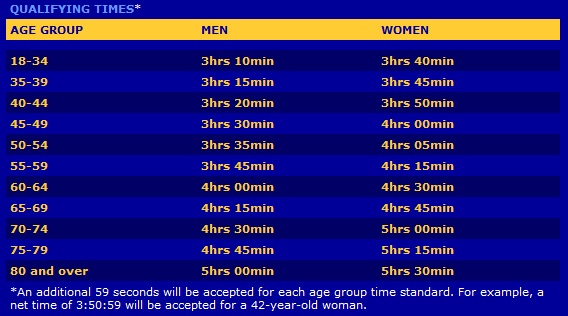
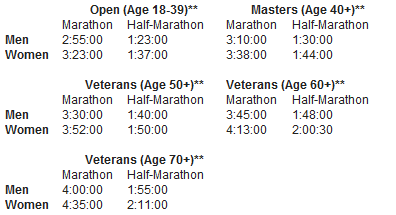
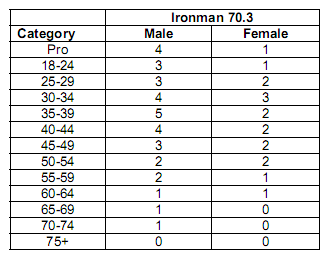

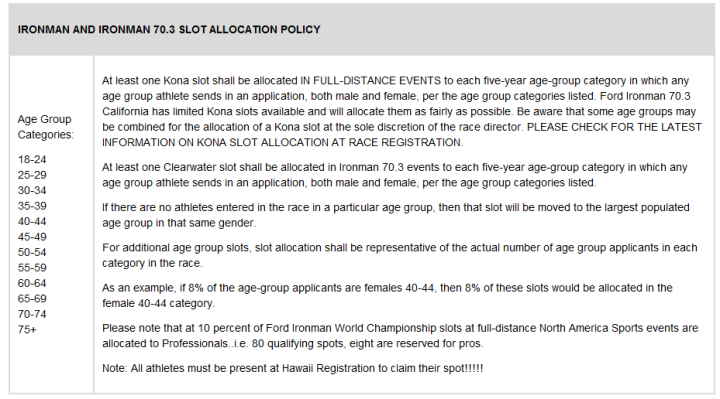

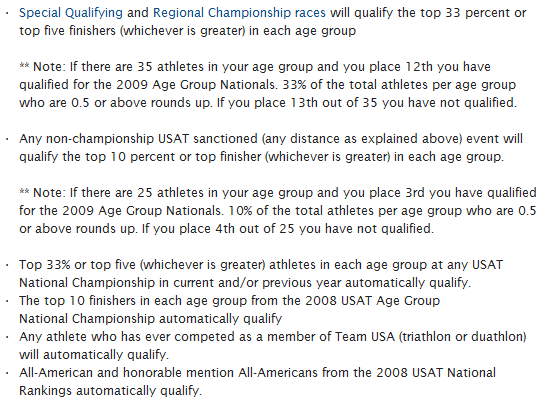





















Thanks for the terrific summary of information.
I would quibble with one point you made concerning qualifying for Kona. You stated, “And unless your 65+ or under 20, it’s the hardest one to get.”
I suspect that racing in an IM event at 65 years of age or older is no simple, easy task. The male winner of that age group at IM CDA finished with a time of 12:45:44, which is not too shabby. There were 10 men in that age group with one Kona slot.
So although percentage wise it might seem an easier task, I would provide you with the same point I often give to younger racers who comment on the seemingly slower time inequity – what will your race times look like 30 – 40 years from now, if you are still actually competing?
Keep those great posts coming Ray!
All great points Al!
For sure, folks in the 65+ group who throw down some of the times that they do are indeed impressive. Both at the Ironman level, but also even at the Marathon level, those qualifying times even for those age groups are without question fairly demanding.
Nice write-UP. I would just add that to qualify for Boston you must run in a race that is a certified Boston qualifier. Race times from indoor marathons and several smaller marathons do not count.
Also, to qualify Kona, you can compete for specially allocated slots as a Hawaii or Big Island resident, if you qualify for that, in the local HI70.3 race. You can also buy one of the usual 3 slots auctioned on Ebay (not really qualifying, though) or try your luck at winning one at Lavaman Waikoloa (a combo of qualifying and lottery).
I think that there must be several lotteries for Kona. There is the Ford Road to Kona Sweepstakes which is free to enter but only available to Americans (which I am not). Then there is the Ironman Lottery that costs you $40 to enter. This lottery has 100 slots for Americans and only 50 slots for the rest of the world. Whats up with that? I thought it was the Ironman “World” Championships. Anyway, it strikes me that this lottery is a huge cash cow for the Ironman licensee rather than some altruistic attempt to enable everyman triathlete to experience Kona. Think of the thousands of entrants that pay $40 to get one of only 50 lottery spots for International entrants. Perhaps it would probably be easier to put on 500 kilos of weight, get on Worlds Biggest Loser TV show and then get the Kona spot for free. Oh wait, Worlds Biggest Loser only features obese Americans. Never mind.
That was a LOT of information to ingest. But it’s ok, cause I don’t think I’ll EVER make it to any of those races!
Yo…this would have been super helpful approx. 5 days ago before i got into a text msg convo with my friend about his trying to qualifying for Kona at Rhode Island (not your age group, he’s 30-34). I didn’t know how that was possible.
Great summary. I learned some stuff re: the shorter distance championships. Good stuff.
Great summary of all the qualifiers out there for us age groupers. It’s nice to have a chance to qualify for BIG races even when not the world’s best 🙂
You can also qualify for Kona some years by being the President, CEO or Owner of a business that grosses 2.5 million a year as part of the CEO Challenge.
This year the CEO Challenge is focusing on smaller events to try to get more participation.
It usually costs a lot as well…less than buying your slot on eBay.
I figure this would be my best chance to make it…I’m getting there…slowly. 🙂
you always have the most informational posts! i always point friends to your blog when they have technical questions!
btw, thought of your photography rant post the other day looking at the professional pictures from hyvee, the cheapest thing was a keychain for $19.99!!
Good luck brother, hopefully we’ll both be sitting at the finish line with either a Kona or Clearwater spot. Might have to meet up and say hi sometime too man. Have a safe trip!
Good stuff to know if I ever decide to go back to the shorter stuff 😉
Of course WSER has it’s own set of qualifying criteria…one has to hope!
Just to expand a bit on the ITU Championships, apart from the Oly distance there is also the annual ITU World Championship for Long Distance, this year (2010) in Immenstadt (Germany) on august 1.
“Qualifying” for these championships, as well as for ITU Oly distance depends very much on different countries. As the number of slots is relatively large for most countries proportionally to the number of active triathletes, it is very easy to qualify. For example in France, any active triathlete can fill in the entry form and participate in these Oly or Long Distance Championships
You need to update the Boston qualifying times, which are now outdated and off by 5 minutes.
Boston: I also heard that depending on the amount of folks applying with qualifying times they may need to drop it down by another 5 minutes due to the popularity of the event this year.
I thought they were keeping it for this year as-is, but that the A/B/C bracketing was still in effect in that you’ll have a better chance with a faster time.